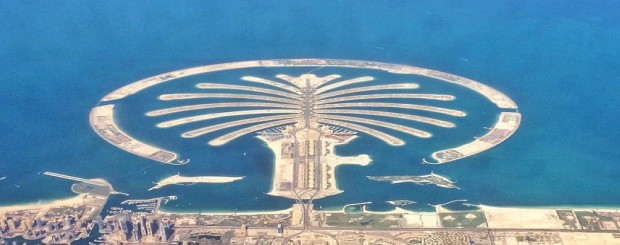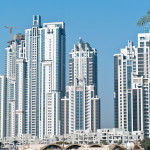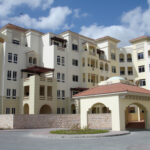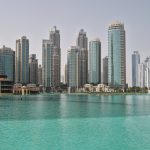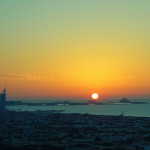Our Guide to the Palm Islands in Dubai
The Palm Islands in Dubai were the brainchild of the visionary Crown Prince of Dubai, Sheikh Mohammed bin Rashid Al Maktoum, who foresaw the depletion of Dubai’s oil reserves and the subsequent shift to other economical sectors to bring in income and keep Dubai’s economy healthy.
As Dubai in particular began to move away from its dependence on oil-derived income, the government made a concerted effort to boost other sectors of the economy including tourism, hospitality, and infrastructure.
This was to support the vision of Dubai as the primary tourist destination and travel hub in the Middle East and North Africa (MENA) region. Indeed, Dubai today draws millions of visitors to its shores, and the Palm Islands are a big tourist attraction.
Palm Jumeirah
The Palm Islands originally comprised three man-made islands, Jumeirah Palm island (the smallest), Palm Jebel Ali (which was 50% larger than the Palm Jumeirah), and Palm Deira – of which the Palm Jumeirah is the only completed island to date.
Construction started in June 2001 and was completed by the end of 2006. Extending 5km into the Persian Gulf, the Palm Jumeirah is shaped like a palm tree topped by a crescent. It is the largest man-made island in the world, and is visible from outer space!
The island was constructed using sand dredged from the bottom of the Persian Gulf. The surrounding crescent serves as a breakwater, comprising over seven million tons of rock, each rock placed using a crane and positioned using a Global Positioning Satellite System.
Adding over 75km of coastline to the shores of Dubai, the Jumeirah Palm Island features luxury villas and hotels, stylish apartments, soft, pristine beaches, marinas, restaurants, and a host of retail outlets. The most popular of these is the Atlantis, a 5-star aqua themed hotel located at the tip of the Palm crescent.
Getting There
There are many ways to get to the Palm Jumeirah: you can grab a taxi, drive there in your own car, or take the Monorail.
The Palm Monorail: The Monorail, launched in April 2009, is an elevated, driverless, fully automated train. The Palm Gateway Monorail Station is located at the base of the Palm and takes visitors up along the trunk to the top of the crescent, where many of the main attractions are located.
It offers some great views of the city, the Palm, and the nearby Burj Al Arab hotel, but you cannot see the palm shape. You need to be up much higher for that.
It does, however, offer spectacular views of the Atlantis hotel on its approach. The Monorail is not currently connected to the Dubai Metro, although plans for this are ongoing. If you use the Dubai Metro, you would need to get off at the Dubai Internet City metro station and walk about 15 minutes (or take a taxi) to the Monorail Station.
Trains arrive approximately every 20 minutes, so expect to wait for a while. The cost of a return ticket on the Monorail is AED 25, and the ride takes about 10 minutes each way.
Taking a taxi: Alternately, you could take a taxi or drive your own car all the way to the Palm. The biggest advantage of the taxi is that it can take you to the fronds where the Monorail does not go, but don’t expect to see much, as the beach views are blocked by villas.
Palm Jumeirah Villas
Living on the Palm Jumeirah is a status symbol for most. The villas are enormous and built in two rows with a central road down the middle, giving each villa access to its own private strip of beach. The average cost of a villa is around AED 13 million (approximately 3.5 million USD). Villas are also available on rent
Hotels and Resorts
The Palm Jumeirah Island has several luxury 5-star hotels, of which the three most popular ones are the Atlantis, the Waldorf Astoria, and the Jumeirah Zabeel Saray.
Atlantis, the Palm: The most popular of Dubai’s luxury resorts, Atlantis is much more than just a luxury hotel and features the Aquaventure Waterpark, The Lost Chambers Aquarium, and a dolphin education center where guests can swim and interact with dolphins.
Hotel guests can enjoy discounted prices at these facilities, which are also open to the public. It also has 23 restaurants to choose from, including an amazing underwater restaurant Ossiano, the legendary Japanese restaurant Nobu, and Dubai’s premiere beach club and restaurant destination, Nassimi Beach.
Reservations are recommended for all restaurants and waterparks, particularly if you are not a guest of the hotel.
Waldorf Astoria: Offering a host of activities for the entire family, including a supervised Kids Club, paddle-boarding, snorkeling, wind-sailing, and deep-sea fishing, a personal Concierge will organize an unforgettable experience to suit your preference.
The Waldorf also boasts its own private soft-sand beach with beautiful and elegant sea-facing rooms, as well as six dining restaurants and lounges to suit your tastes.
Jumeirah Zabeel Saray: A truly luxurious five-star experience awaits guests at the Zabeel Saray on the Western crescent of the iconic Palm Jumierah island. Guests can choose from 379 tastefully decorated rooms, 26 lavish suites, and 38 Royal Residences – all with stunning ocean views – and enjoy a dip in the outdoor spill-edge pool overlooking the Arabian Gulf.
The Talise Ottoman Spa can make your stay even more pleasurable with a variety of treatments to leave you feeling relaxed, refreshed, and rejuvenated.

